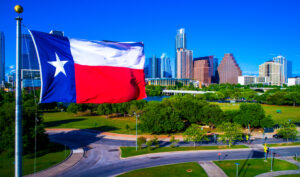Providing transport for children with Special Educational Needs and Disabilities (SEN-D) is a statutory duty of local authorities but it helps to remember that this service is a lifeline for families living in extremely
challenging circumstances. At a conference last year, a mother described how she had managed to gain ‘A’ levels, a degree, a PGCE and a job as an English teacher whilst her severely disabled son was cared for at school, and in getting to-and-from school.
QRoutes helps local authorities and schools organise better home to school transport. “Better” means a higher quality of service for students, lower transport emissions and lower overall cost for the budget holder.

Special Educational Needs and Disabilities Transport in the UK
Although the number of children with SEN-D entitlement is the minority, it commands significant budget. UK local authorities spend in excess of £1bn per annum on home-to-school transport. A 2019 report found 69% of that is spent on the 26% of transported children qualifying as SEN-D. This has had a knock-on effect on ‘mainstream’ school transport. Councils have felt forced to cut their spend on discretionary home to school services by 27%. More students travelling to school by car is clearly not going to help the country meet its climate change commitments.

The planners’ job
Planners need to combine the journeys individuals need to make (where they’re going to and when) for delivery by locally available supply. Although software solutions have been around for nearly 30 years, until relatively recently experienced planners could get better results manually. QRoutes is different. The quality of its automated results and its map based editing features mean planners can calculate and compare optimised solutions in seconds.
“I think it is still a valuable tool for even very experienced planners. They’ll have ideas in their heads that they believe is the most efficient way. But sometimes [this software] will show things that they wouldn’t have seen.” Adrian Weissenbruch, SEND Transport Planner, Wiltshire County Council.

Appropriate transport for each child
The day-to-day operational demands mean planners need to make quick decisions. Previously, faced with a situation in which a child urgently needed transport planners would call a taxi. Who would complain about a taxi ride to school? Indeed, for children with social or behavioural problems, that may be the right solution.
But for those who acutely feel the pain of being singled out for their otherness, the social element of travelling together is an important part of their day.
Sharing is important for social as well as financial reasons.

Lower costs, lower emissions, and better client experience
On average, QRoutes customers save between 10%-15% of operating cost through reducing the number of vehicles required and the overall mileage travelled. Leeds City Council saved 400 miles a day, equating to around 12 tonnes of CO2 per year by planning with QRoutes and reduced the number of children with extended journey times.
And then COVID came along
When lockdown happened, QRoutes made its staff and software available to support local authorities free of charge wherever needed. The team also implemented some technical updates to better enable package deliveries.
“The support from QRoutes has been a huge help in enabling efficiencies with daily driver planning.” Victoria Harper, who is leading the Food Response team at Manchester City Council.
During the build-up to the return to school, QRoutes enabled planners to assess how many vehicles would be needed if all children travel with social distancing, how to plan travel in bubbles, and how to allocate pupils to different bus stops so they could socially distance safely before boarding. It has been one big nightmare getting the children all back to school, although I must admit would have been 10 times worse without QRoutes.” Lynnette Marks, Dudley Metropolitan Borough Council.
Digital resilience and the future
The demands on planners are increasing. More children than ever are entitled to supported home-to-school transport. Climate change is knocking at the door, and we need to improve shared transport options for the younger generation (alongside safer walking and cycling).
It’s not rocket science that making best use of the available resources, makes more resources available. Digital transformation is the ‘how’. The children and their families are the why. The amazing achievements of the mother who spoke at the conference are evidence of the impact these services can have on improving outcomes.












